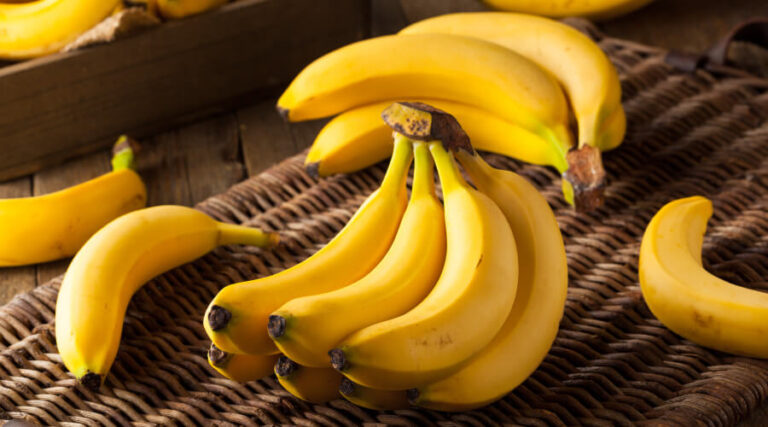Controlling carbohydrates in your diet is a crucial rule both for maintaining stable body weight and for leveling blood sugar levels. This is the beginning of the low-carb diet, a diet that can be more effective for people with diabetes than even medications.
The basis of low-carb dietary nutrition involves limiting carbohydrates to 150 g per day, although this figure is adaptable to the gender, physical activity, and age of each person. It is recommended that most carbohydrate products are vegetables, fruits, and whole grains.
Below are examples of foods to reach 150 grams of carbs per day and why it is important to choose options that also provide other nutrients.
Is it reasonable to eat 150 grams of carbohydrates per day?
First of all, it is essential to make a reservation that we are talking about when it comes to 150 grams of carbs. Here we refer to the net or digestible carbohydrates and not 150 grams of carbohydrate-containing foods.
As an example, 150 grams of cooked brown rice contains approximately 50 grams of net carbohydrates. This amount is equivalent to a relatively large portion of food, and not only will it generate satiety, but it will also provide other nutrients.
In comparison, if we opt for 100 grams of sugar, they will be more net carbohydrates – (100 grams of sugar is equal to 100 grams of net carbohydrates), but they will be of poorer quality, they are refined carbohydrates, and they provide empty calories.
This shows that when reducing carbohydrates in the diet, it is important to include whole foods that contain other essential elements for our body.
It is also worth clarifying that for some people, 150 grams may be below the ideal to stay with energy – this is when you have to take into account your weight, age, and physical activity.
Eating 150 grams of net carbs per day can be a good figure for losing weight and regulating your glucose, as long as you opt for carbohydrate sources from natural, nutritious food sources.
Examples of foods with 150 grams of carbohydrates
Here are examples of what would be 150 grams of carbohydrates in food.
- Bread and cereals
Ten servings – each provides 15 grams of carbohydrates:
- 1 slice of bread
- ¾ cup of whole grains: buckwheat, oats, millet, spelled
- ½ cup pasta
- ½ cup of white rice
- 1 tortilla
- Six crackers
- 1 small pancake
- 1 serving of pretzels
- 1 small muffin
- ½ bagel
- 2 cups of popcorn
- Vegetables
10 servings (every 100 grams provides approximately 15 grams of carbohydrates):
- Papas
- Boniato
- Parsnip
- Ñame
15 servings (each 100 grams provides approximately 10 grams of carbohydrates):
- Broccoli
- Zucchini
- Onion
- Red pepper
- Celery
- Beetroot
- Spinach
- Kale
- Avocado
- Cauliflower
- Tomatoes
- Aubergines
- Jewish
- Fruits
10 servings (each 100 grams provides approximately 15 grams of carbohydrates):
- Banana
- Grape
- Pineapple
- Mango
- Orange
- Cake
15 servings (each 100 grams provides approximately 10 grams of carbohydrates):
- Tomate cherry
- Strawberries
- Raspberries
- You have to
- Blueberries
- Cantaloupe
- Avocado
- Coco
- Lemon
- Kiwi
- Pomelo
Clarification: It is suggested to eat 5 servings of fruit per day, see low-carb fruits
- Milk and dairy products
12 servings (each 200 mL provides 12 grams of carbohydrates):
- Greek yogurt
- Whole or skim milk
- Drinkable dairy products and sugar-free desserts
Clarification: most cheeses and non-drinkable products are not high in carbohydrates, check the packaging for safety.
- Sweets and soft drinks
High content – (each 100 grams can provide between 80 – 100 grams of carbohydrates):
- Sugar
- Honey
- Candies
- Candies
Moderate high content 20-70 grams of carbohydrates per 100 grams:
- Refreshments
- Juices
- Sweet cookies
- Sweet chocolates
- Donuts
- Sugary sauces
- Refined flours
- Ice cream
- Pizzas
- Dried fruits with sugar
- Others
- Meats provide less than 5 grams of carbohydrates per serving.
- Sweeteners do not provide significant amounts of carbohydrates
- Oils, butter do not provide significant amounts of carbohydrates
Low carb diet
The low carb diet consists of limiting carbohydrates to 100-150 g per day. This type of diet is useful for people with prediabetes or type 2 diabetes.
According to studies, the low-carbohydrate diet is capable of reversing type 2 diabetes in a period of approximately 1 year, and if it is effective, it could be an efficient and effective way to avoid the consumption of medications.
The recommendation to eat 150 g of carbohydrates per day implies the exclusion (or maximum restriction) of refined carbohydrates: sweets and fast food.
Today’s nutritionists are grouping these types of foods under the category of ultra-processed foods , adding pizza, mayonnaise, ice cream, French fries, and more.
Scientists point out that eating ultra-processed foods builds tolerance², that is, gradually, a person begins to consume more and more. Also, the taste of “normal” food begins to seem too bland and uninteresting.
ABSTRACT
150g of carbs a day is the basic recommendation for a low carbohydrate diet. However, it’s not so much about counting carbs as it is about cutting out ultra-processed foods and switching to foods with natural carbohydrates (whole grains and low-starch vegetables).
Carbohydrate distribution between meals is important – it will keep you energized throughout the day and help keep your blood sugar levels stable. The main thing, as always, is moderation and an integrated approach.







